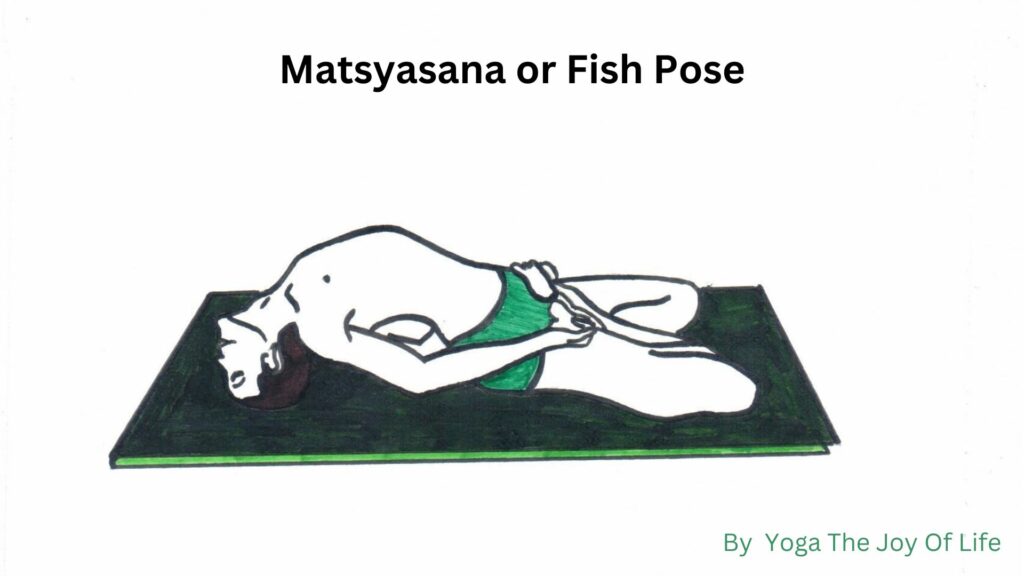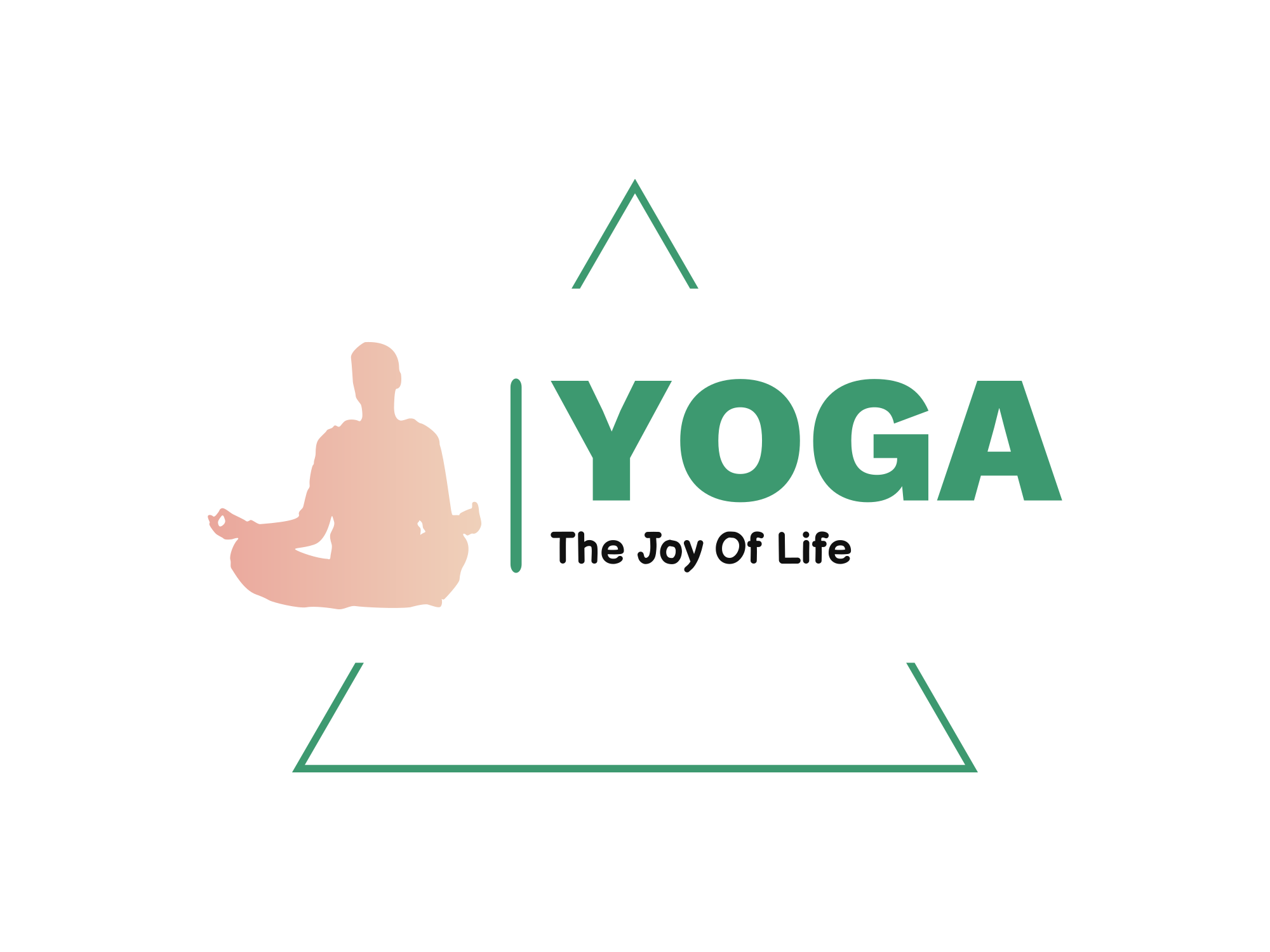What is Matsyasana – Matsya means fish. In the last position of this asana, the position of the body becomes like a fish in water, hence it is known as Matsyasana. Some Maharishis think that if one remains in the water by doing this asana, then the person can keep swimming like a fish. Therefore it is known as Matsyasana.

How to do Matsyasana –
1. Padmasana is done first.
2. After applying Padmasana, lie down on the back with the support of both elbows.
3. With the help of both hands, bend the neck and place the middle part of the head on the ground.
4. Slowly bring both hands forward hold the toes and place the elbows on the ground.
5. While coming back, first release the toes and bring the head to the right position with the support of the hands.
6. Sit in Padmasana with the help of a story.
Awareness in Matsyasana –While practicing Matsyasana, physical awareness should be on the stomach, chest, and breath. From a spiritual or meditation point of view, the center of perception is the Vishuddhi Chakra, where we focus our attention while doing Matsyasana.
Sequence in Matsyasana –There is a rule in yoga that after a forward bending asana, a backward bending asana should be practiced. Generally, after Bhujangasana, Matsya Asana is practiced for its opposite position. After Matsyasana, one should practice Halasana or Sarvanga Asana as they stret ch the neck in the opposite direction and relieve muscular tension.
Breathing in Matsyasana –While doing Matsyasana, breathing is slow and deep. The breath has to be experienced in your stomach.
Duration of Matsyasana – The last position can be up to 5 minutes, although for normal health 1 to 3 minutes is sufficient.
Precautions in Matsyasana – 1.People suffering from heart disease, peptic ulcer, hernia, spine-related diseases, or any serious disease should not practice this asana. Pregnant women should also avoid it.
2. When you lie down on your back after doing Padmasana, keep in mind that your knees do not lift from the ground.
3. Trying to keep the middle part of the neck on the ground by applying pressure on the ground without the help of palms can prove fatal and by applying pressure on the ground with the palms, keeping the middle part of the head on the ground only with their help. Needed
4. Careless placement of the hairline or keeping it crooked can cause neck pain or headache. Only the middle part of the head should be kept on the ground.
5. By keeping both knees on the ground holding the toes with the fingers of both hands and placing the elbows on the ground, one gets the complete benefits of the asana.Lets us know the principles of yoga practice.
Matsyasana Benefits –
1. By applying Matsyasana in Padmasana, one gets all the benefits of Padmasana.
2. In the Matsyasana position, there is pressure on the cervical cells. This is very beneficial for people who have neck pain or cervical spondylosis.
3. In this asana, the ribs expand, thereby massaging the arteries and heart, which benefits heart patients and those with high blood pressure.
4. In this asana position, due to internal pressure in the abdomen, the digestive process works smoothly due to which there is no possibility of stomach-related diseases.
5. Due to chest expansion, the lungs get full space to expand, which is very beneficial for asthma patients.
6. In the asana position, there is a strain on the thyroid gland and parathyroid gland. Due to this, they provide immense benefits in the treatment of diseases.
7. This asana is considered an easy complement to Sarvangasana and Viparita Karani. Therefore, it is mandatory to do this asana after Sarvangasana or Viparita Karani because the weight or tension that comes on the neck by doing Sarvangasana is removed and balanced by completely bending the neck in this asana. By doing Matsyasana for one-third of the time for which Sarvangasana or Viparita Karani can be made easy, the body gets the full benefits of both the asanas.
8. This asana expands the intestines and stomach organs and is beneficial for all stomach diseases. It also removes inflammation and bloody piles. Regularizes the functioning of the thyroid gland and increases immunity by stimulating the thymus gland.
9. In this, there is a good expansion of the pelvic region and the pressure exerted by the legs on the thighs reduces the blood circulation in the legs and sends the blood to the pelvic area, which helps in curing or preventing diseases of the reproductive system. The practice of Sheetkari Pranayama in the last position of the asana makes the voice sweet and stable. Youth and vitality increase.
10. Matsyasana expands the lungs and cures lung and respiratory-related diseases, whether it is asthma, bronchitis, or cough defect. When the neck gets swollen, especially in the case of tonsillitis, massaging the neck in this state reduces the swelling. It happens. This helps in re-conserving blood clots in the back. Cervical spondylitis and tension arising in the lower back also get relieved by this exercise. It is also useful for the pain in the lower back and pain that women experience during pregnancy due to a weak waist.
11. It has also been described at one place in Hatha Yoga that to overcome constipation, one should do this exercise for as long as possible after drinking two to three glasses of water. It is believed in Hatha Yoga that by doing this the disease of constipation gets cured. This exercise expands the intestines, hence it is especially beneficial for them
